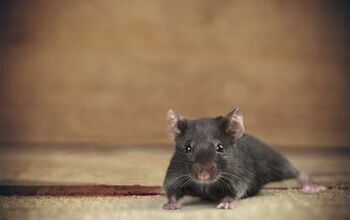Is It Safe To Sleep In A Room With New Carpet?

For most, new carpet smells are a gentle reminder of a recent home upgrade. Though, for some, the smell is an annoying stench that can render a room almost unusable. Whatever side you stand on, new carpet smells are not the healthiest thing to be breathing in.
It is safe to sleep in a room with a new carpet, but manufacturers recommend that you wait 2-3 days. Fresh carpet smells strong but does not produce a large amount of volatile organic compounds that can be dangerous. You can either air out the room and safely sleep with a new carpet or wait for up to 3 days.
However, if you have babies, small animals, or elderly individuals in the home, taking special precautions is essential. Regardless, there are some actions you can take to protect yourself and your family from your new carpet.
We’ll explore what exactly causes these new carpet odors, the possible health concerns, and how you can clean your air of the smell as quickly as possible.
Are you looking for carpet installers?
Get free, zero-commitment quotes from pro contractors near you.

Why Does My New Carpet Smell?
That familiar new carpet odor is caused by volatile organic compounds or VOCs. This term is used to describe a broad group of chemicals frequently used in the manufacturing process of household materials such as vinyl flooring, paint, wood furniture, and carpeting.
Volatile refers to the fact that these chemicals evaporate when they reach room temperature. Your new carpet, just like other household products, is off-gassing. As it off-gasses, or releases this chemical residue, these VOCs enter the air and produce an odor detectable by the average human nose.
The VOCs that are guilty of producing the new carpet smell are 4-phenylcylohexene (4-PCH) and styrene. These chemicals are found in the synthetic latex backing of the carpet as well as the padding and adhesives used to affix the carpet to your flooring.
Additionally, if any dyes, anti-static materials, or water repellents weren’t entirely rinsed during manufacturing, they may also contribute to the VOCs in your home.
How Long Does Carpet Off-Gassing Last?
When you have new carpet installed in your home, it will off-gas the most during the initial 24 to 48 hours after installation. After the preliminary 48-hour period post-installation, you should expect your carpet to continue to off-gas, but at much lower levels.
Whether it’s carpet, furniture, or any other household material, off-gassing of VOCs will occur at some level during the entire life of the material. Off-gassing does happen during the manufacturing process as well. Long term exposure to these off-gassed chemicals at low levels can be just as harmful as short-term exposure at much higher levels.
Luckily, carpeting is considered to be one of the lowest VOC-emitting flooring products. However, you still should take steps to eliminate off-gassing and reduce exposure for years to come.
Who Is at Risk of VOCs?
When it comes to most household materials, you can’t completely eliminate your exposure to VOCs. But, you want to reduce your contact as much as possible and this is especially true for certain high-risk individuals. The following groups of people are especially vulnerable to the harmful effects caused by VOCs.
- Babies and young children
- Elderly (particularly those with lung/pulmonary issues)
- Small animals
- Those with asthma or severe allergies
While this doesn’t mean that these types of people cannot come into contact with the carpet, it does mean that special precautions should be taken. Thankfully, carpet manufacturers have begun listening to their consumers and are releasing more eco-friendly products that off-gas less.
Carpet Off-Gassing Effects
The volatile organic compounds that are released from the off-gassing of your new carpet can cause a number of harmful effects. While carpet has the lowest level of VOCs, you could still experience one of these symptoms, especially if you are among one of the high-risk groups.
In regards to short-term effects, off-gassing of chemicals can cause headaches, nausea, shortness of breath, dizziness, and asthma-related reactions. Although less likely, the long-term effects associated with some of the VOCs include cognitive impairment, leukemia and lymphomas, hearing loss, and more.
Is it Safe to Sleep in a Room With New Carpet?
Since carpeting has such a low level of VOCs, your likelihood of experiencing negative off-gassing effects is also low, unless you are of a higher risk. However, the VOCs are strongest within the first two to three days and you should avoid using the room during this time period.
Therefore, it is safe to sleep in a room with new carpet, as long as you’ve waited the recommended three days and the room was properly ventilated. Open the windows and use fans placed on the highest settings. Also, keep the door to the room closed to prevent the smell from reaching other areas of the home.
How to Limit Carpet VOC Levels
Now that you have a better understanding of how VOCs contribute to indoor air pollution, let’s explore all the ways that you can reduce it after your new carpet has been installed. You can implement any of the below recommendations or, for best results, combine them to effectively lower the VOC levels in your home.
- Check for the green label. Green labels are awarded to carpeting by the Carpet and Rug Institute (CRI) for emitting low amounts of VOCs. They, along with the EPA’s recommendations, have placed strict standards on what carpets qualify. Look for this label when you’re shopping for carpeting to ensure the lowest level of harmful chemicals. The Green Label Plus certification has even stricter standards.
- Have your installer air out the carpet. It isn’t unreasonable to ask your installer to air out the carpet prior to installation. Since carpeting is stored in massive rolls, they often don’t have the opportunity to properly “breathe.” Check with your installer to see if they can unroll it and let it breathe for at least a week before bringing it into your home. This should reduce the amount of VOCs when it’s time for installation.
- Choose an installation day with good weather. This will allow you to be able to open your doors and windows to allow proper ventilation of the space. The fumes won’t affect you nearly as much when they can exhaust outside.
- A good vacuuming. Giving your carpet a thorough vacuuming may be effective against reducing the odor in your home. You can also sprinkle baking soda on the carpet, allow it to sit for up to 24 hours and then vacuum it up. The baking soda will help absorb some of the off-gassing chemical fumes.
- Steam cleaning. If the new carpet odor is really intense, it may benefit from a steam cleaning to help rinse away the lingering chemical residue in the carpet fibers. You can rent or purchase a standard steam cleaner from your local home improvement center. Or, opt for professional carpet cleaning for a more effective clean.
- Buy plants. Plants are a great way to help breakdown the VOCs that have infiltrated your air and reduce odors. Boston fern, bamboo palm, spider plant, and English ivy are all great options that contribute to clean air in the home.
Wrapping It Up
If you’ve just had new carpet installed in your home, you may be wondering if it’s safe to sleep in the room where it was installed, especially if you smell that familiar new carpet odor. Since carpet has the lowest number of VOCs of most household materials, new carpet won’t affect the health of the average person. However, there are certain high-risk groups of people who are especially vulnerable.
While it can be safe, most recommend that you should wait at least three days for your new carpet to air out properly. Special precautions should be taken to keep you and your family safe, even if you aren’t one of the groups that is particularly sensitive to VOCs.
Are you looking for carpet installers?
Get free, zero-commitment quotes from pro contractors near you.

Related Questions
What is the least toxic type of carpet?
Wool is considered the best choice among experts due to sustainability and its ability to enhance your indoor air quality. Other natural materials, such as seagrass or sisal, make excellent choices for non-toxic carpeting. However, you want to make sure that you select one that hasn’t been treated with any added chemicals, like a waterproof or stain-resistant coating.If you cannot avoid using a synthetic type of carpet, make sure to go with a brand that has been properly vetted by a company that screens for VOC levels.
How long do you have to wait to put furniture on new carpet?
It takes roughly 24 hours for new carpeting to fully adhere to your floor. Replacing your furniture before that time can cause permanent damage to the new carpet. Therefore, you should wait at least 24 hours to put furniture on new carpet.For more carpet related questions, check out: “ Can Bed Bugs Live In Carpets?” or “ How Long Do You Have to Wait to Put Furniture on New Carpet?”
Related Guide

Jessica considers herself a home improvement and design enthusiast. She grew up surrounded by constant home improvement projects and owes most of what she knows to helping her dad renovate her childhood home. Being a Los Angeles resident, Jessica spends a lot of her time looking for her next DIY project and sharing her love for home design.
More by Jessica Stone













![10 Best Zero Turn Mowers – [2022 Reviews & Ultimate Buyer's Guide]](https://cdn-fastly.upgradedhome.com/media/2023/07/31/9070522/10-best-zero-turn-mowers-2022-reviews-ultimate-buyer-s-guide.jpg?size=350x220)













